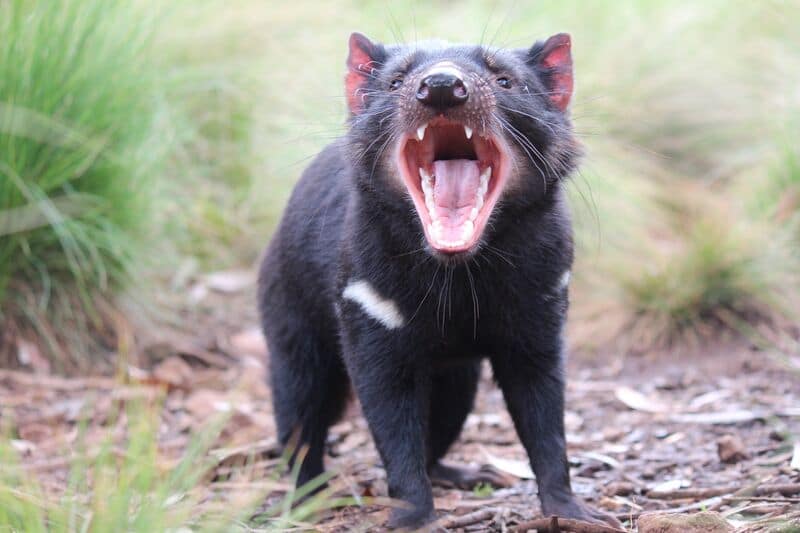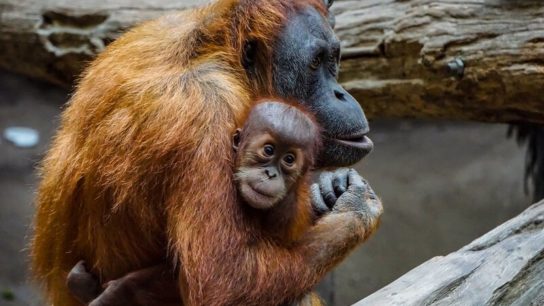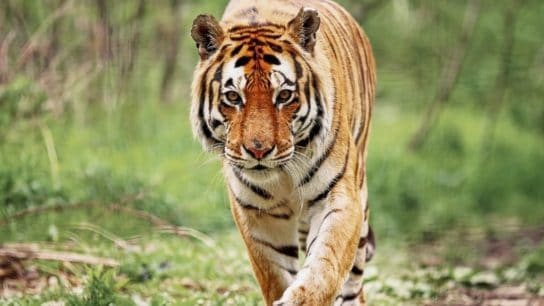Mainland Australia is celebrating the birth of seven Tasmanian devil joeys born to adults released last year into a wild sanctuary, the first time Tasmanian devil joeys have been born in the wild in 3 000 years.
—
What is Happening?
- Aussie Ark, in partnership with Re:wild and WildArk, worked together to make this possible.
- Of the 26 adult Tasmanian devils released in 2020, seven were reproductive females. Initial pouch checks showed that the joeys appear to be in great health and developing normally. Aussie Ark rangers will continue to monitor the mother devils through camera traps and will conduct follow-up pouch checks in the coming weeks. Aussie Ark estimates that 20 Tasmanian devil joeys will be born in the wild this year.
Tim Faulkner, president of Aussie Ark, says, “We have been working tirelessly for the better part of 10 years to return devils to the wild of mainland Australia with the hope that they would establish a sustainable population. Once they were back in the wild, it was up to them, which was nerve wracking. We had been watching them from afar until it was time to step in and confirm the birth of our first wild joeys. And what a moment it was!”
- Tasmanian devils vanished entirely from mainland Australia in large part because they were outcompeted by introduced dingoes, which hunt in packs. Dingoes never made it to Tasmania, but across the island state, a transmissible, painful and fatal disease called Devil Facial Tumor Disease (DFTD)- the only known contagious cancer- decimated up to 90% of the wild population of Tasmanian devils. Just 25 000 devils are left in the wild of Tasmania today.
- For the last decade, the Aussie Ark team has been building an insurance population of Tasmanian devils and learning everything they can about the animals, including about their reproductive physiology, behavior, and ecological needs, all leading up to the 2020 reintroduction.
- Aussie Ark selected the 26 devils for reintroduction based on those most suitable to breed with one another without any inbreeding. The wild sanctuary prevents the spread of disease, feral pests, noxious weeds and fire, which was catastrophic last year for the country. The wild sanctuary also keeps cars out, ensuring that the devils learn not to associate cars with food- an association that could be deadly when they are more widely released.
Don Church, president of Re:wild, says, “The fact that the adults have adapted so quickly is remarkable and the joeys are one of the most tangible signs that the reintroduction of Tasmanian devils is working. This doesn’t just bode well for this endangered species, but also for the many other endangered species that can be saved if we rewild Australia, the country with the world’s worst extinction rate. Tasmanian devils are ecosystem engineers that can restore and rebalance the wild to the benefit of other native wildlife, to the climate, and to people.”
- As native apex predators and the world’s largest carnivorous marsupials, Tasmanian devils help control feral cats and foxes that threaten other endangered and endemic species. Because they are scavengers, they help keep their home clean and free of disease.
- Aussie Ark’s Tasmanian devil breeding programme is the most successful conservation breeding facility for the endangered species on mainland Australia. Aussie Ark founded a Tasmanian devil breeding programme in 2011 with 44 individuals. Today, it’s home to more than 200, which is about 50% of the entire conservation insurance population spread across mainland Australia. Over the years, more than 390 devils have been born and raised at Aussie Ark in a way that encourages and fosters their natural behaviours, helping ensure that they maintain all the skills they need to survive in the wild.
- In the next two years, Aussie Ark will do two additional releases of 20 devils each. The animals are monitored through regular surveys, radio collars fit with transmitters and camera traps. This gives the researchers the opportunity to learn about how the devils are faring, where they are claiming territory, what challenges they are facing, and what they are eating. In one recent discovery, Aussie Ark witnessed two Tasmanian devil sisters who had been apart for two years come back together again in the wild. All of this information will help to inform future releases, including in Tasmania and elsewhere on the mainland, to continually refine the process.
You might also like: Endangered Species Day 2021: 12 of the Most Endangered Animals in the World
Mark Hutchinson, cofounder of WildArk, says, “Once again we’ve been amazed by the dedicated work of Aussie Ark to repopulate Australia’s wildlife. This breeding milestone with the Tassie Devil programme on the mainland represents such a positive step towards seeing our endangered marsupials flourish. Tim Faulkner and the whole team are an inspiration to us at WildArk and we’re so fortunate to call them partners. Watch this space, more wildlife goodness coming.”
- The Tasmanian devil is one of seven cornerstone species critical to Australia’s ecosystem that Aussie Ark plans to reintroduce to the wild sanctuary in the coming years, all chosen to help restore the natural balance: Eastern quoll, Brush-tail rock wallabies, Rufous bettong, long-nosed potoroo, parma wallabies and southern brown bandicoots.

















